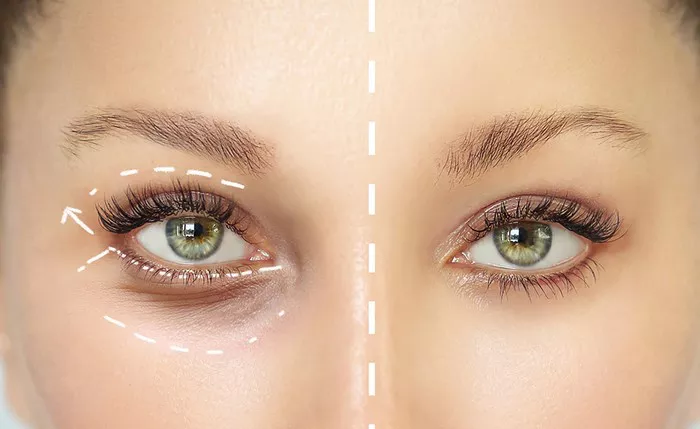Blepharoplasty, commonly referred to as eyelid surgery, is a surgical procedure aimed at rejuvenating the appearance of the eyelids by removing excess skin, fat, and muscle. Whether you are considering upper or lower eyelid surgery, it is important to understand the recovery process to ensure a smooth and successful healing journey. In this article, we will explore the typical timeline and factors affecting recovery from blepharoplasty.
Immediate Post-Operative Period
After blepharoplasty surgery, it is common to experience some temporary side effects and discomfort. Here’s what you can expect during the immediate post-operative period:
- Surgical Dressings and Cold Compresses: Your surgeon may apply special dressings or ointments to protect the incision sites and promote healing. Cold compresses may be recommended to minimize swelling and bruising.
- Swelling and Bruising: Swelling and bruising around the eyes are normal after eyelid surgery. The extent and duration of swelling and bruising vary among individuals. It is typically most prominent during the first few days and gradually subsides over the following weeks.
- Discomfort and Pain: Some degree of discomfort, tightness, or mild pain is common after blepharoplasty. Your surgeon will prescribe pain medication or recommend over-the-counter pain relievers to manage any discomfort. Follow your surgeon’s instructions regarding medication usage.
- Restricted Activities: You will be advised to avoid strenuous activities, heavy lifting, and bending over for a few days to minimize swelling and promote healing.
- Follow-Up Appointments: Your surgeon will schedule follow-up appointments to monitor your healing progress, remove any stitches or sutures, and address any concerns or questions you may have.
The Recovery Timeline
While the exact recovery timeline varies from person to person, the following is a general overview of what you can expect during the recovery process after blepharoplasty:
-
First Week
During the first week, you should plan to take time off from work and other responsibilities to focus on recovery. Swelling and bruising will be most pronounced during this period, gradually improving each day. You may experience some mild discomfort or tightness, which can be managed with prescribed pain medication or over-the-counter pain relievers.
-
Second Week
By the second week, most of the swelling and bruising will have subsided. However, some residual swelling may persist, especially in the mornings or after prolonged periods of activity. You may start to feel more comfortable and resume light activities as advised by your surgeon.
-
Third to Fourth Week
Swelling continues to decrease, and most patients can resume their regular daily activities. However, strenuous exercise and activities that put strain on the eyes should still be avoided. Any residual bruising can typically be covered with makeup. You will notice gradual improvements in the appearance of your eyelids as the healing process progresses.
-
Six Weeks and Beyond
By this time, the majority of swelling and bruising should have resolved. Your eyelids will continue to heal and settle into their final position. It is important to protect your eyes from excessive sun exposure and use recommended sun protection measures.
Factors Affecting Recovery
Several factors can influence the speed and ease of your recovery from blepharoplasty. These factors include:
- Individual Healing Ability: Each person’s body has its own healing rate and capacity. Factors such as age, overall health, and lifestyle habits can impact the healing process.
- Surgical Technique: The specific surgical technique used by your surgeon can influence the extent of tissue trauma and subsequent healing. Minimally invasive techniques and precise surgical approaches may contribute to a faster recovery.
- Post-Operative Care: Following your surgeon’s post-operative care instructions diligently is essential for optimal healing. This includes taking prescribed medications, avoiding strenuous activities, and keeping the incision sites clean and protected.
- Healthy Lifestyle: Maintaining a healthy lifestyle, including a balanced diet, regular exercise, and adequate sleep, can support the healing process and help reduce swelling and bruising.
Final Results
The final results of blepharoplasty can take several months to fully manifest. It is important to have realistic expectations and understand that the healing process is gradual. As swelling subsides and the tissues settle, you will notice a more refreshed and rejuvenated appearance of your eyelids.
Consulting with Your Surgeon
Every individual’s recovery experience may vary, and it is crucial to consult with your plastic surgeon for personalized advice and guidance throughout the healing process. They will monitor your progress, address any concerns, and provide specific instructions tailored to your needs.
Conclusion
Recovering from blepharoplasty involves a gradual healing process that varies from person to person. While immediate post-operative effects such as swelling, bruising, and discomfort are common, they subside over time. The recovery timeline generally spans several weeks, with significant improvements observed within the first month. Full recovery and the realization of final results may take several months. Factors such as individual healing ability, surgical technique, post-operative care, and a healthy lifestyle can influence the speed and ease of recovery. By following your surgeon’s instructions and maintaining patience, you can enjoy a successful and satisfying outcome from blepharoplasty.


